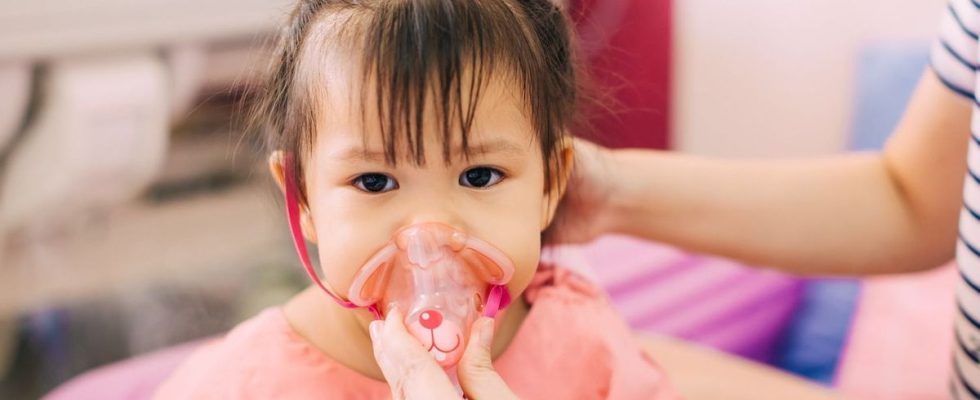Published on
Updated
Reading 2 min.
in collaboration with
Dr Gérald Kierzek (Medical Director of Doctissimo)
Medical validation:
November 23, 2023
Hospitalized patients, closed schools… In northern China, a mysterious pneumonia epidemic has emerged. Hospitals thus turn out to be “overwhelmed” with sick children. A bad scenario, which closely resembles the appearance of the coronavirus at the end of 2019.
As cases of pneumonia and respiratory illnesses increase in China, should we fear for our health? Dr. Gérald Kierzek, medical director of Doctissimo, answers us..
Children are the first affected
The scene resembles a bad dream, a repeating nightmare… And yet, these numerous cases of childhood pneumonia and respiratory illnesses are very real: in Beijing, the hospital of the Institute of Pediatrics is submerged, the Waiting in the emergency room lasts hours and some schools have had to close their doors.
Children seem particularly affected by this strange epidemic, which causes high fever, wet cough and fatigue in toddlers. Small pulmonary nodules (abnormal spots in the lung, editor’s note) also appear on scanners.
“It is not known exactly when this outbreak began, as it is unusual for so many children to be affected so quickly“, reveals the global disease surveillance system ProMED.
Although it is not yet possible to know the exact origin of the disease, the Chinese authorities affirm that this increase in cases is linked to the lifting of restrictions linked to Covid-19 and the circulation of pathogens.
The bacteria responsible for this epidemic outbreak is precisely known to the authorities. It is called “Mycoplasma pneumoniae”, and, like Covid-19, it is transmitted through the respiratory tract via fine droplets during close contact.
For the moment, no deaths have been recorded by the authorities: the disease, which is treated with antibiotics (azithromycin), therefore appears benign on paper.
“These are just pictures for now. We should therefore not panic,” says Dr. Kierzek. “We know the bacteria in question, Mycoplasma pneumoniae, perfectly: we have already had numerous cases of atypical pneumonia in France. On the other hand, the symptoms of this respiratory disease require special monitoring in children, because the mortality rate is relatively high. Despite everything, the Asian populations affected have a way of life different from ours, often closer to animals (crossing the inter-species barrier is then more important) and they are more isolated, or even do not have a system of adapted health. They are therefore more impacted”.
The return of barrier gestures
If this Chinese pneumonia is anything but mysterious. On the contrary, it is well known to the authorities, particularly the French. Surveillance of cases remains necessary.
“The antibiotic resistance of the bacteria is, moreover, still unknown.“, reveals Dr. Kierzek.
For “reduce the risk of respiratory illness“, the World Health Organization, for its part, called on the Chinese population to respect certain barrier gestures.
They include getting vaccinated, keeping your distance from infected people, staying home if you have symptoms, testing yourself if necessary, wearing a mask and ventilating your home well. Washing your hands regularly is also recommended.
